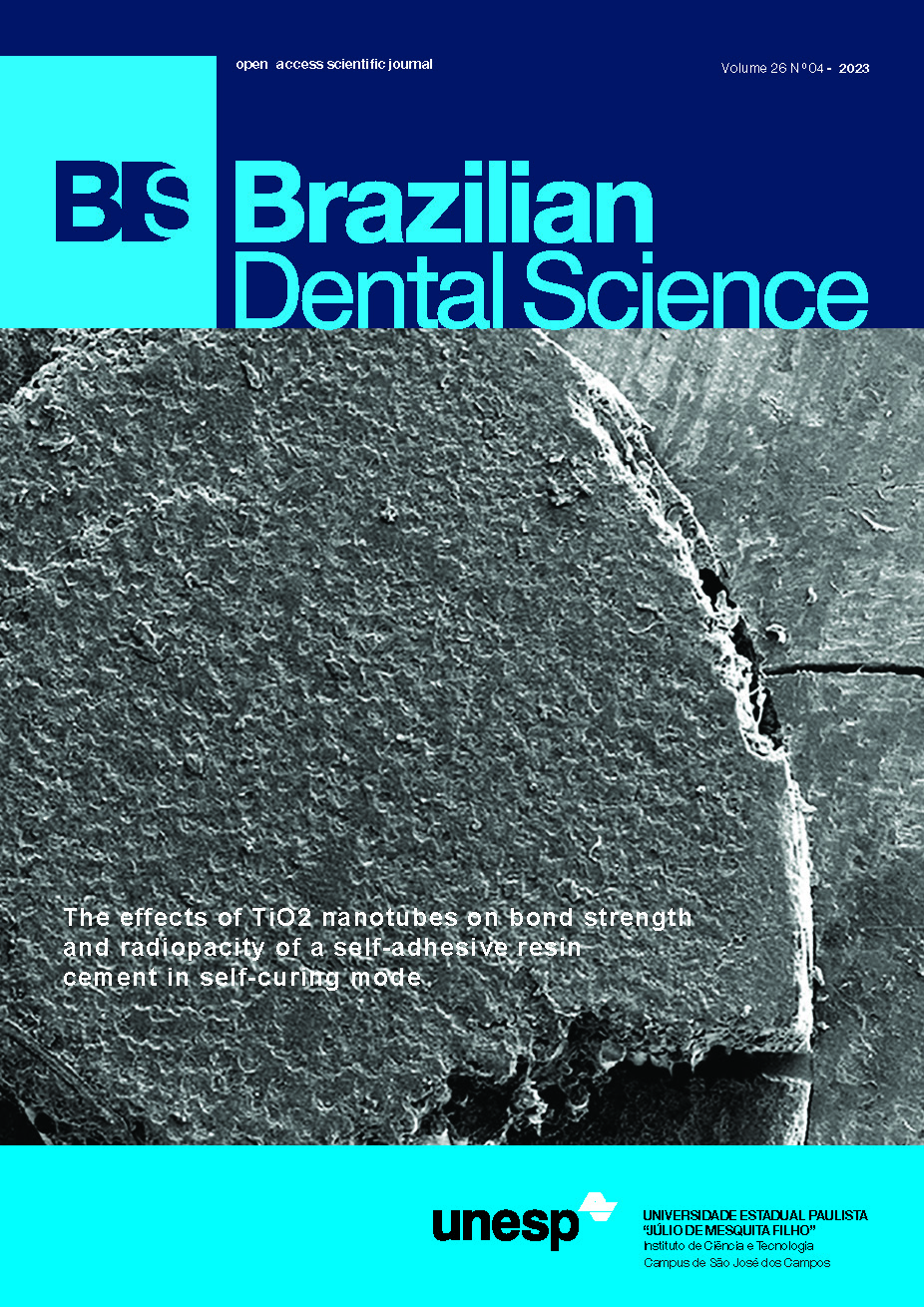Effect of 10% Proanthocyanidin gel on demineralized organic matrix degradation: ELISA method
DOI:
https://doi.org/10.4322/bds.2023.e3946Abstract
Objective: This study evaluated Proanthocyanidin protective effect on dentin subjected to erosion and its inhibition on degradation of the demineralized organic matrix (DOM). Material and Methods: The tested groups were: G1 - 10% Proanthocyanidin gel (test group), G2 - 1.23% NaF (positive control 1), G3 - 0.012% Chlorhexidine (positive control 2) and G4 – Placebo (negative control with no active compound) and two methodologies were performed: contact profilometry and ICTP ELISA method. To quantify dentin wear, profilometry was performed. Data were submitted to Analysis of Variance followed by Fisher’s LSD Test. To assess the collagen degradation, ICTP ELISA method was performed. Data were submitted to the Kruskal-Wallis followed by the Dunn´s test. Simple linear regression and Pearson Correlation test were also performed (p<0.05). Results: The profilometry showed significantly lower wear of G1 when compared to other groups and G2, G3 and G4, which did not present significant difference among them. In the ICTP ELISA analysis, G1 and G4 did not show significant differences and the same happened between G2 and G3. However, G1 and G4 had lower values of collagen degradation compared to groups G2 and G3. Data showed that degraded DOM is a significant predictor to explain the values obtained through the ICTP ELISA. Conclusions: The results allow to verify that 10% proanthocyanidin provided less tooth wear and decreased degradation of the DOM, suggesting a good ability to prevent dentin erosion. The regression analysis also suggests that contact profilometry is a good strategy to quantify dentin wear.
KEYWORDS
Dentin; Tooth erosion; Proanthocyanidins; Dental wear; Preventive health.
Downloads
Published
How to Cite
Issue
Section
License
Brazilian Dental Science uses the Creative Commons (CC-BY 4.0) license, thus preserving the integrity of articles in an open access environment. The journal allows the author to retain publishing rights without restrictions.
=================




























